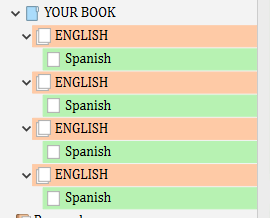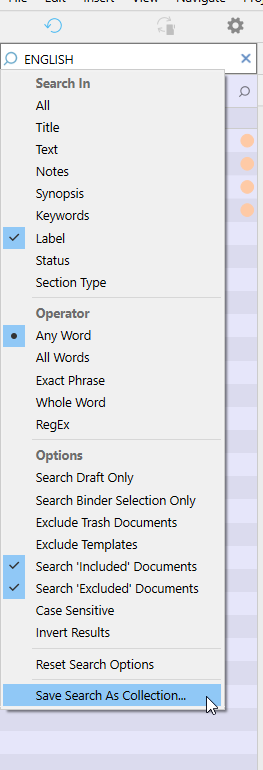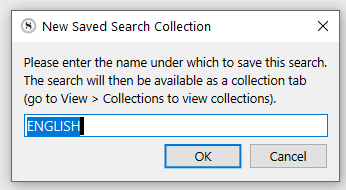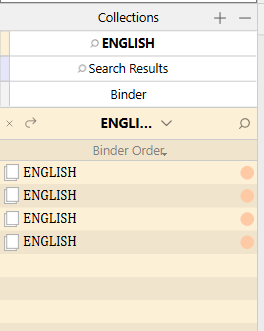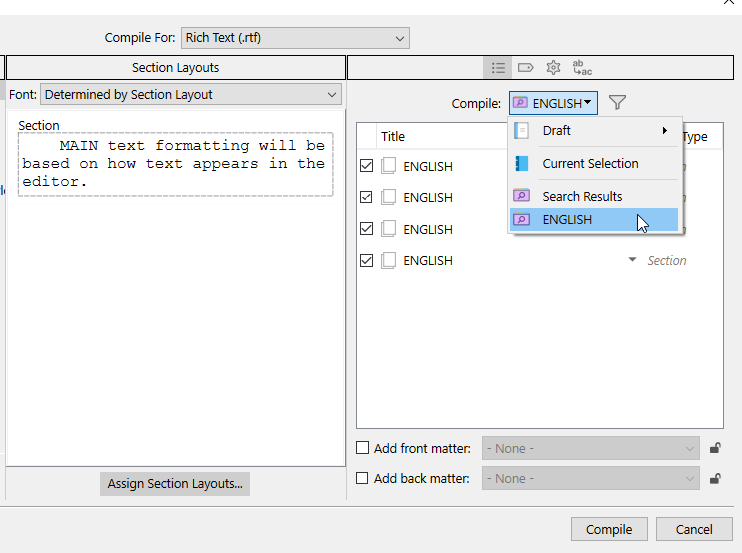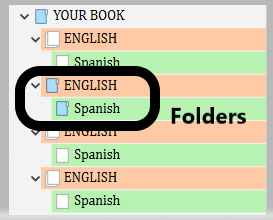I’ve had Scrivener for Windows for several years, but I’m only now beginning to use it seriously. I’m writing my memoirs in both English and Spanish, and I have a question about how to organize my work.
Should I create a separate project for each language? Some of my research notes apply to both versions since I’m writing the memoir in English and then translating it into Spanish. What’s the best way to coordinate this in Scrivener?
Hi.
I, should I tackle such a task, would have the binder organized as per the version it was first written in.
I would then have the translated documents as child of their original.
Using labels I would make them stand out visually from one another.
(One of the first and foremost advantages would be that you could translate with the original and the translated version next to each other in a split editor. – All the while everything, and what it corresponds to, neatly organized and confusion-proof.) – It also takes care of the research material challenge.
After which, using the labels, I’d create a collection for each.
These two collections could also then be compiled apart.
. . . . . . . . .
MORE...
⮝⮝ This above creates a collection that will keep up to date on its own.
You will have to somewhat mimic binder structure folders vs files, and assign section types manually.
If the original was a folder, for a chapter with title etc, the spanish translation will want to get its title compiled too, but it ain’t at the same level, so automatic section types assignement won’t work. (You could alternatively split the whole in two separate projects at the very end…)
(Perhaps it’d be best to completely void the folder/file distinction at compile. In which case you wouldn’t have to bother with the above.)
The other option would be to strictly respect binder structure, and use links to have your documents point to their alter-ego. (That wouldn’t be my preference. I’d much prefer to do the section type assignement manually, near the end, then to have a binder that forces me to think about anything other than the task at hand.)
2 Likes
The way that @Vincent_Vincent suggests is the way I have used for years collaborating on Chinese – English and English – Chinese translation. (I’m a Mac-user and my collaborators are Windows-users, and no problems with that!) In a number of cases the final document had to be alternating Chinese and English texts, so it was organised in the Binder in final order. But with English and Chinese keywords assigned, I set collections based on those keywords which were then opened in left and right editors for working. Worked brilliantly.
I guess you’re not going to be interleaving the two languages, so I’d probably just have English and Spanish folders under Draft, set up appropriate document templates with section types assigned to use to create new documents within each folder. If you use the same section types for the equivalent documents in each language, they can have the same Section Layout assigned in the Compile dialog, simplifying matters greatly at that time. Then you can open the English texts, whether singly or using Scrivenings mode, in one editor split and the Spanish texts in the other.
You’ll have to switch dictionaries etc. for spell-check etc., if that’s important to you, as you work on each of the languages. But you will inevitably have red squiggles proliferating through the other language text. For that reason, I have spelling and grammar checking permanently off and do it post-compile in my word processor, which can be set to mark languages; it’s Mac only so I have no idea what’s possible on Windows. But as I assume you will be compiling each language separately, that should be easy to handle.

Mark
3 Likes
Thank you so much for the clear and detailed explanation. I’m going to be going over the two tutorial material to see exactly how I would do that. I’ve already begun the memoir and I am keeping them in text files in a separate folder on my hard drive. Later on, I can copy/paste them in a Scrivner project.
1 Like
We’re here if you need.
. . . . . . .
I had originally been writing these in Windows Notepad. I put a few these into scrivener as I am just learning how to make program work for me. I made the English into text documents under draft, and I made the Spanish versions into child documents under the appropriate text document. I labeled and color-coded them, one label for English and another label for Spanish. I hope that will help me keep things together.
I love how I can have the English and the Spanish side-by-side for easy editing and revision. I turned off spell and grammar check and am using alternative means to do this.
Hi!
Apart from what kindly pointed out by Vincent, I would have chosen to have two folders (with the icon of an book) independent within the manuscript because I think it will be much easier to compile later.
If you need to compare chapters of both versions, you can use collections or keywords. Each author has their preferences and ways of addressing work.
Good luck!
